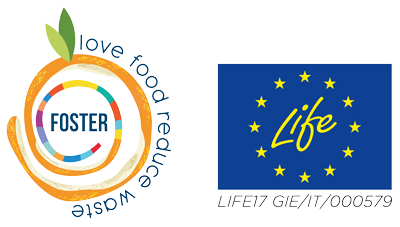Whether it’s a matter of too-large portions, too small appetites or cultural norms, people leave their food on their plates more often than what is acceptable. Research done in Australia shows that customer plate waste makes up more than 45% of the total amount of food that has been tossed away in the hospitality sector.[1] In another study conducted by WRAP, it is estimated that around 30% of total food waste in out-of-home dining comes from customer plates.[2]
As daily consumers and participants of the food supply chain, we are all equally responsible for our behavior. Nonetheless, restaurants, hotels, diners and other eateries are likewise liable for their practices. Therefore, in this article, we bring some suggestions for reducing plate waste caused by customers on one side and the foodservice sector on the other.
Ask the waiters
As a customer, suppose you have specific taste requirements or even an allergy to particular foods. In that case, you should always be responsible and conscious enough to do as much as possible to avoid ordering the food you might not like or cannot eat because of health reasons. Having a clear picture of what the menu offers is one of the most important things when ordering a dish in a restaurant. If you are unsure about the portion size, specific flavors, or allergens, always consult with the staff before ordering. This way, you will prevent yourself from having too much food on your plate, which will reduce the chance of food waste.
Talk to your body
One of the vital aspects of eating, in general, is constantly being aware of our body’s needs. Having a continuous awareness of our body helps us make decisions about our food, no matter where we eat. In other words, deciding to eat out shouldn’t impact, let alone, diminish our connection to our bodies.
That means that if our body is telling us we are not so hungry, there is no need to order a large portion of pasta along with the starter and a dessert. You should already understand yourself enough to know this is too much for you. Even more so, such behavior is quite reckless and irresponsible. Instead, we should act accordingly when we know what amount of food we need to feel satisfied. Sometimes it is better even to order less food and then add some extras if we realize we are still hungry.
Nonetheless, if there is still some extra food left on your plate, do not despair – asking the staff to pack your leftovers is your solution.
Takeaway containers
This brings us to takeaway containers. Although there is still some embarrassment involved around the doggy bags, the rise in this sustainability-friendly trend is apparent. Some old out-of-home dining habits are simply outdated, and being hesitant to ask for a doggy bag is undoubtedly one of them. Moreover, nowadays, the restaurant should even encourage guests to take the extra food home by offering takeaway containers.
So, as a guest in a restaurant, if you are still feeling reluctant to ask the staff to pack your leftovers, simply think about the enormous amount of food being thrown away in the restaurants daily. We doubt you want to find yourself increasing the overall food waste issue just because you were too shy to ask for a doggy bag.
Follow the customer trends
As a restaurant owner, you will probably want to know what your guests like about your food and what they don’t like. At the same time, the style of your cuisine will likewise determine why people come to your place to eat.
So ask yourself, which food always gets eaten in your restaurant? And which food do you often see uneaten and put aside, ready to be tossed away?
Maybe the green peas in rice don’t sit well with the customers, or the store-bought white bread doesn’t appeal to many guests. Or perhaps the food was excellent, but the portion size was simply too big. Therefore, it is time to make changes and adjust the meals according to what you see on the plate after the guests are gone. This asks for more flexible menus, as the following step recommends.
More flexible menus
Designing a menu certainly requires a lot of effort and knowledge. While the restaurant offer needs to stay appealing and recognizable, it is also essential to be flexible enough to cover diverse guests’ requirements.
If the meal includes side dishes that the customer hasn’t explicitly asked for, there is a big chance this will end up being thrown away. As a study reveals, carbohydrates like chips and bread rolls and raw vegetables such as cabbage salad seem to be the most discarded sides.[3]
Offering menus where customers can choose their portion size and whether they want an extra side dish is a key to reducing food waste. Also, there is nothing wrong with asking guests if they like a particular side dish. Hence, in order to minimize the customer plate waste, the restaurant should know what and how much to include on a single plate.
Measure your waste
It is vital to measure how much food is thrown away for any change to be made regarding food waste within the kitchen. Many methods are available to help restaurants measure their food waste.
One of them might be to set separate bins for each stage of food preparation. For example, the first bin is for the preparation waste, the second bin for the plate waste and the third bin for the expired products from the storage. After a few days, measure the amount of each bin waste and see where you get the most food waste within the preparation process. After acquiring these results, it is time to take action.
Conclusion
Tackling customer plate waste is not an easy task to do. However, if we are willing to do something about the massive food waste we encounter worldwide, we should take necessary steps towards sustainability.
So, what CAN we learn from customer plate waste?
We could say that four main things stand out: collaboration, communication, flexibility and action.
When it comes to customer plate waste, as we mentioned above, all the participants within the hospitality sector need to show a certain level of readiness and teamwork to reduce food waste. Because, if customers only stopped ordering too large portions and started first talking to the waiters about the menu options, and if restaurants began listening to customers’ needs and wants, the change we wish to see in the future might be nearer than we think.
[1] https://www.lovefoodhatewaste.nsw.gov.au/sites/default/files/2021-02/Food%20Services%20Magazine%20Article%20-%20Plate%20waste.pdf, 21 January 2022
[2] https://blog.gotenzo.com/guide-to-reducing-plate-waste, 21 January 2022
[3] https://publications.parliament.uk/pa/cm201617/cmselect/cmenvfru/429/429.pdf, 21 January 2022



- KVFTAfvPKn
reply- CmAUbomyCPjOXKd
reply- DexterDaype
reply- Zacharylic
reply- dxRCDTzDUh
reply- JIfwvfBGIMDMTCC
reply- Davidceare
reply- Официальный каталог Боттега Венета
reply- EJERRkOmvrqkTTG
reply- iLddbNAfahwKg
reply- hgXmclEaSwJbC
reply- dwLmdqfSSxi
reply- ZoeiYIVHkajBnt
reply- rBiZqtjTLL
reply- LBFLlBSR
reply- PopuKOkV
reply- bfjAmEcjNfPy
reply- ZfSJPKjyg
reply- qrRWVIvuaSuRYp
reply- RolandriZ
reply- eQxSRIgFvCw
reply- RoberttheSy
reply- lpHbNQUktwHfyAH
reply- промокоды цум
reply- RlaUlJBECbu
reply- MHXkczsNkY
reply